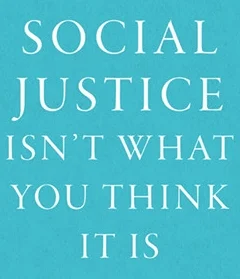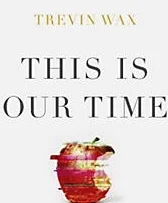Living on the Edge - A Review
There is plenty that is not right in America right now. Political divisions are leading to violence and hatred among people with opposing views. The middle class is shrinking as more people move into upper tiers of income, leaving some members of society behind. Debates about race rage on, with insults hurled on every side, and little hope of resolution. There is a lack of respect for the struggling class and sometimes sheer hatred for those that have done better financially.
Sociologist Celine-Marie Pascale attempts to find the solution to these problems and present them in her book, Living on the Edge: When Hard Times Become a Way of Life.
There are several underlying premises in the book that shape her results. First, she believes that the economy is a fixed size, so that when some people have more it necessarily comes at the expense of those who have less. (xii) This, of course, sets the course for the necessary solution. The chief problem she finds is not access to economic on-ramps but distribution of resources. Second, that the existence of poverty “has not happened by accident,” but “It is the result of decades of collusion between business and government to maximize corporate profits at the expense of workers.” (x) As a result, as the author describes her project, “Ultimately, it is a book about power that has been leveraged by government and corporations at the expense of ordinary people.” (xi)
The book is a mix of quantitative analysis and personal interviews. It is to Pascale’s credit that she traveled to Appalachia and other economically disadvantaged areas to actually meet people and find out how they lived. Along the way, Pascale uncovers a number of unfortunate structural problems in society. For example, as she notes, “in many communities it is impossible to hold a job if you don’t own a car.” (1) This, of course, puts those on the hairy edge of subsistence in constant jeopardy, because a deer crossing the road, a bad transmission, or a careless driver can jeopardize employment and financial stability. Pascale also attempts to discuss the issue of class prejudice, which is an often-neglected element in these discussions. But it is apparent to many on the bottom end of the economic latter that, whatever the rhetoric, the upper classes despise them. The book is to be commended for recognizing these challenges.
At the same time, Pascale’s attempt to make this a mix on anecdote and analysis ends up undermining her case and displaying her own prejudices against the people she is studying. A few examples:
To take a break from driving, I stop at a shop in a small town in Tennessee. The shop keeper greets me and proudly explains that her store belongs to God. ‘I just mind it for him,’ she says with a great smile. Before I could blink twice, we are in a conversation about faith and I am asking about her relationship to the Bible.
‘The Bible—start to finish—is the word of God.”
‘Old Testament and New?’
‘Yes, word for word.’
I’m a little unsettled by this, but not surprised.
Pascale—a Buddhist—then goes out of her way to ask highly speculative questions about the nature of a soul and then critiques the woman because “she seems less certain and her answers grow vague.” (64)
It’s not the account or making religion a part of the interview that is striking—that is certainly a part of good sociological research—but it is Pascale’s obvious bias. How does someone go into Appalachia with the intent to interview folks and not understand some of the basic beliefs of evangelical Christianity—for example, that the Bible is the word of God? And then to be willing to express that one is “unsettled” by this entirely ordinary belief? And then to follow this with an account of digging into a complex philosophical question about the soul to emphasize that the shop keeper was not was well educated in philosophy as the author seems odd. There is a patronizing tone to many of these anecdotes.
In another personal interjection into the analysis, Pascale records her observations while driving in the South, while driving near the site of several Civil War Battles, along the Blue-Gray Highway. She writes, “Although I don’t see mention of the battles, I count three Confederate flags on this stretch of road – fewer than I has expected. Even so, I find them unnerving. Carried today by white supremacists on their marches, the flag is an emblem of the Confederacy and feels like a warning.” (18)
In the context, this memory serves no purpose in advancing the author’s argument. It seems an honest reflection on her experience along her journey, but it also reflects why Pascale’s work does not result in truly helpful analysis along the methods she has chosen. One need not defend the flying of a Confederate flag to recognize that symbols may convey messages we may not understand and which may not be as nefarious as we would like to portray them. Pascale never explores that possibility or the social dynamics that might drive someone to rebel against the genteel classes by flying the Confederate battle flag considering race.
There are other examples that show Pascale is too disconnected from the people she seeks to help to be properly diagnostic, as when she gets into a tense, racial confrontation with a gas station attendant (who may have been its owner) because she does not understand how to pump her gasoline. (30-31) But toward the end of the confrontation, the man expressed distaste for Trump—his “white president” as she calls him—and frustration at the political class, so she expressed hope that she is “on his side of the fence now.” Unexplored in this account—and likely the really interesting question—is whether the man’s underlying frustration that led to a comment about the blackness of the “former Black president” was driven by poorly considered regulation by the Obama administration. Perhaps it was those regulations that cost the man a great deal of money by forcing him to get new pumps that were likely more complex and expensive than needed. The world will not know, because Pascale inserted herself into the story rather than doing the investigation.
Living on the Edge tackles a worthy topic. There are certainly a large number of people who are in economic strait jackets due to systemic injustices of various sorts. Pascale presents the conspiracy theory that “decades of collusion between business and government” have caused all of the problems of the poor. Her proposal is to expand government social programs, eliminate the Electoral College to increase the power of urban centers over Appalachia, and other proposals borrowed from the talking points from the populist Left. There is nothing innovative about her solutions.
The book ends where it began, which comes as little surprise to those that read the preface. There is little new ground covered—new stories, but very few new nuggets of thoughtful analysis—and mainly an attempt to embolden the already convinced.
Pascale concludes the book with the statement: “Regaining a democracy will mean ending the exploitation of the many by the few. With vision, effort, and some luck, it will be a win for the people of the country. It is past time that ‘liberty and justice for all’ actually means something.” (232)
To the reader who believes there is a significant problem with poverty and stagnation of classes, but who sees different solutions, this book offers very little helpful analysis. It’s hard to take someone seriously who claims to be speaking for a class of people who she so poorly understands and seems to respect so little.
Though Pascale tries to establish her poverty street cred with a brief story about her impoverished childhood (1-2), what comes through in this book is a naturalist trying to study a common species by stopping in their habitat to take a few notes, then rushing back to her office to slip the evidence back into the argument that had already been drawn up. This book reminds me of overhearing some well-dressed youngsters drinking Starbucks drinks discussing how “bougie” someone was for asking them not to break in line at the post office—there is a disconnect between reality and self-perception.
In the end, Pascale fails to explain how granting more centralized control to the entities that she claims are colluding against people helps the people being colluded against. She does not explain why removing political power from more rural states and concentrating it in densely populated areas—the areas that will be best served by concentrated government power—advances representative democracy and serves better the people she will effectively disempower. One may share Pascale’s concerns over “exploitation of the many by the few” and recognize that her solutions would simply make matters worse.
NOTE: I received a gratis copy of this volume with no expectation of a positive review.































There’s no reason to doubt that Jesus was nailed to the cross. Ultimately, I trust what Scripture says about Jesus’s crucifixion because I also trust what it says about his resurrection. And that’s what we should be celebrating this week.